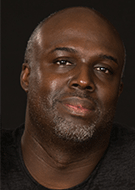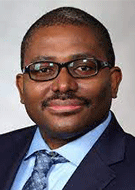Responding to ‘Relentless Growth’ of the Radiologist’s Workload
Many potential strategies for alleviating workload strain raise more questions than answers



In what won’t be a surprise to radiologists, excessive task loads and resulting burnout continue to be a major challenge in radiology. A recent survey of 5,300 practicing physicians in The Joint Commission Journal on Quality and Patient Safety, found that radiologists self-reported one of the highest physician task load scores of any specialty.
“With the exception of a brief reduction in imaging studies during the 2020 peak of the COVID-19 pandemic, the workload of radiologists in the United States has seen relentless growth in recent years,” said Stephen Waite, MD, clinical associate professor of radiology and internal medicine at SUNY Downstate Medical Center in Brooklyn and co-author of a Radiology study on the effects of workload and duty hours on radiologists’ productivity and accuracy. “I would attribute this to radiology being a ‘victim’ of its own success. Clinicians increasingly utilize imaging as our scientific innovations demonstrate improved patient care.”
Max Wintermark, MD, agrees about the challenges of the radiologist’s growing workload. He is a professor and chair of neuroradiology at the University of Texas MD Anderson Cancer Center in Houston.
“The volume of imaging studies that need to be read by radiologists has outpaced the number of radiologists available to read them,” he said. “The cause of this increase is multifactorial, including the aging of our population and the increased reliance on imaging by our clinical colleagues. COVID-19 may also have resulted in hiring freezes at the time, and retiring radiologists were not replaced, contributing to the shortage of radiologists.”
Looking for Solutions: AI and RVUs
AI has the potential both to decrease error rates and to increase the rate at which radiologists interpret studies, according to Ronnie Sebro, MD, PhD, professor of radiology and orthopedics at Mayo Clinic in Jacksonville, FL. In his view, the net result may not translate into decreased pressure on radiologists.
“A well-created AI tool will result in increased radiologist efficiency,” he said, noting that this may not facilitate more manageable workloads. He compared the use of AI to the adoption of PACS systems.
“PACS have allowed radiologists to be far more efficient, but this increase in efficiency has not translated into regained time,” he said. “Instead, it has increased pressure on radiologists to interpret more studies.”
According to Dr. Sebro, a more effective way to relieve workload pressure would be to focus on changing the way that studies are reimbursed.
“Each year, the American Medical Association Relative Value Scale Update Committee tries to assign a relative value unit (RVU) to each of the studies performed in medicine,” he said. “The RVUs for several radiology studies have decreased over time, and with the decrease in RVU comes a concomitant inflation-adjusted decrease in reimbursement.”
Most people prefer having their salary stay the same or increase over time, he noted, so physicians feel pressure to be “more productive” by interpreting more studies to get higher RVUs, only to have the RVUs of those studies go down over time.
“Each year, the cycle repeats itself,” he said. “This sets up a horrible cat and mouse game, where there are no winners.”
Simply put, Dr. Waite said, RVUs “don’t accurately reflect the work radiologists do.”
“Scholarly and educational activities represent two of the three primary pillars at academic medical centers, but these are non-RVU-related activities,” Dr. Waite said. “Even non-academic work such as consulting with clinicians generates no RVUs.”
As such, he said, “many have discussed using academic RVUs—a system that assigns weights and creates formulas for assessing productivity in publications, teaching, administrative duties as well as community service and research—as a better metric of productivity in an academic environment.”
“The volume of imaging studies that need to be read by radiologists has outpaced the number of radiologists available to read them. The cause of this increase is multifactorial, including the aging of our population and the increased reliance on imaging by our clinical colleagues. COVID-19 may also have resulted in hiring freezes at the time, and retiring radiologists were not replaced, contributing to the shortage of radiologists.”
Max Wintermark, MD
Duty Limits: Help or Hindrance?
Although workload and duty limits have the potential to relieve workload pressure, it’s unclear how to implement them in a way that would be effective for all radiologists, noted Dr. Waite.
“We agree that, at some point, increased speed reduces accuracy, but the problem is that we don’t have the requisite data to make meaningful rules that universally apply,” he said. “We need further studies of how radiologist performance changes with different workloads, expertise, fatigue and time of day to understand variability between and within readers.”
Workload limits could end up doing more harm than good, according to Dr. Sebro.
“A mandated limit may be set too high and still result in the radiologists at the lower end of the curve being pushed beyond their limits and therefore becoming unsafe,” he said. “Each radiologist should be encouraged to self-regulate; however, even this suggestion is naïve because external pressures from the administration can quickly erode self-regulation.”
Ultimately, the best way to help make radiologists’ workloads more manageable is with the help of effective leadership, Dr. Sebro asserted.
“We need leaders who seek to enhance science and innovation in the field in a way that improves workload issues, while enhancing accuracy and safety among radiologists.”
Dr. Wintermark noted that any and all changes that affect radiologists should be considered under the lens of benefiting patients.
“Radiologists need to continue pioneering original and creative approaches that will allow them to harness technological advances while remaining close and visible to their patients as they provide high levels of patient care,” he said.
For More Information
Access the Radiology study, “Mandating Limits on Workload, Duty, and Speed in Radiology.
Access The Joint Commission Journal on Quality and Safety study on workload, “Physician Task Load and the Risk of Burnout Among US Physicians in a National Survey.”